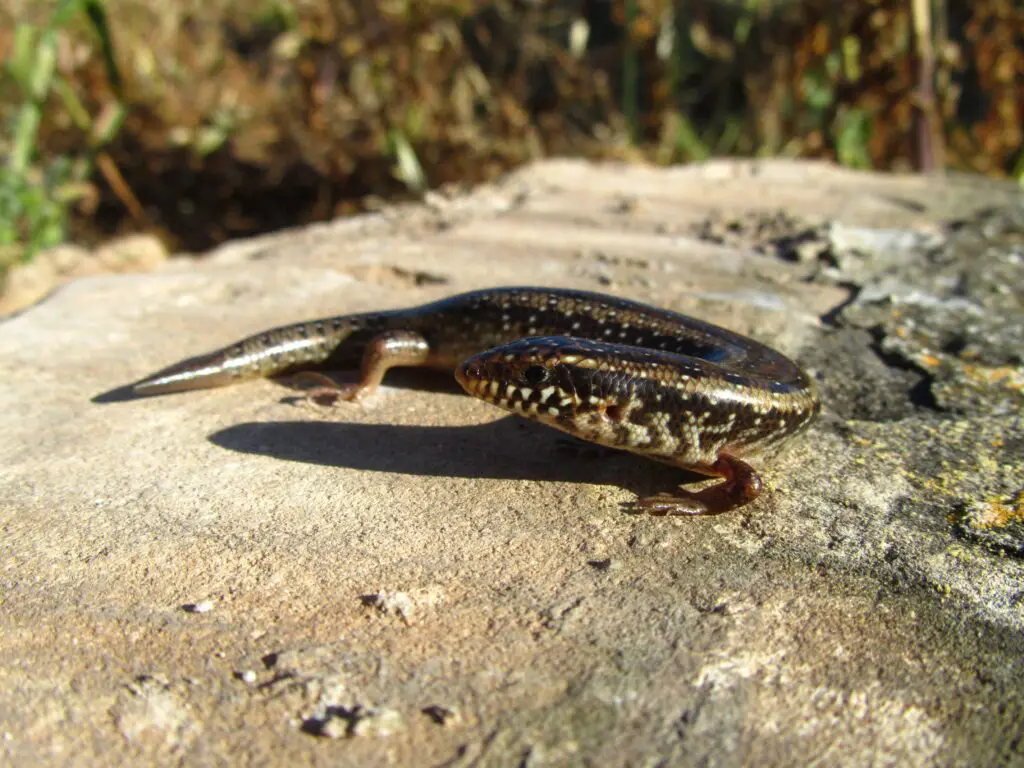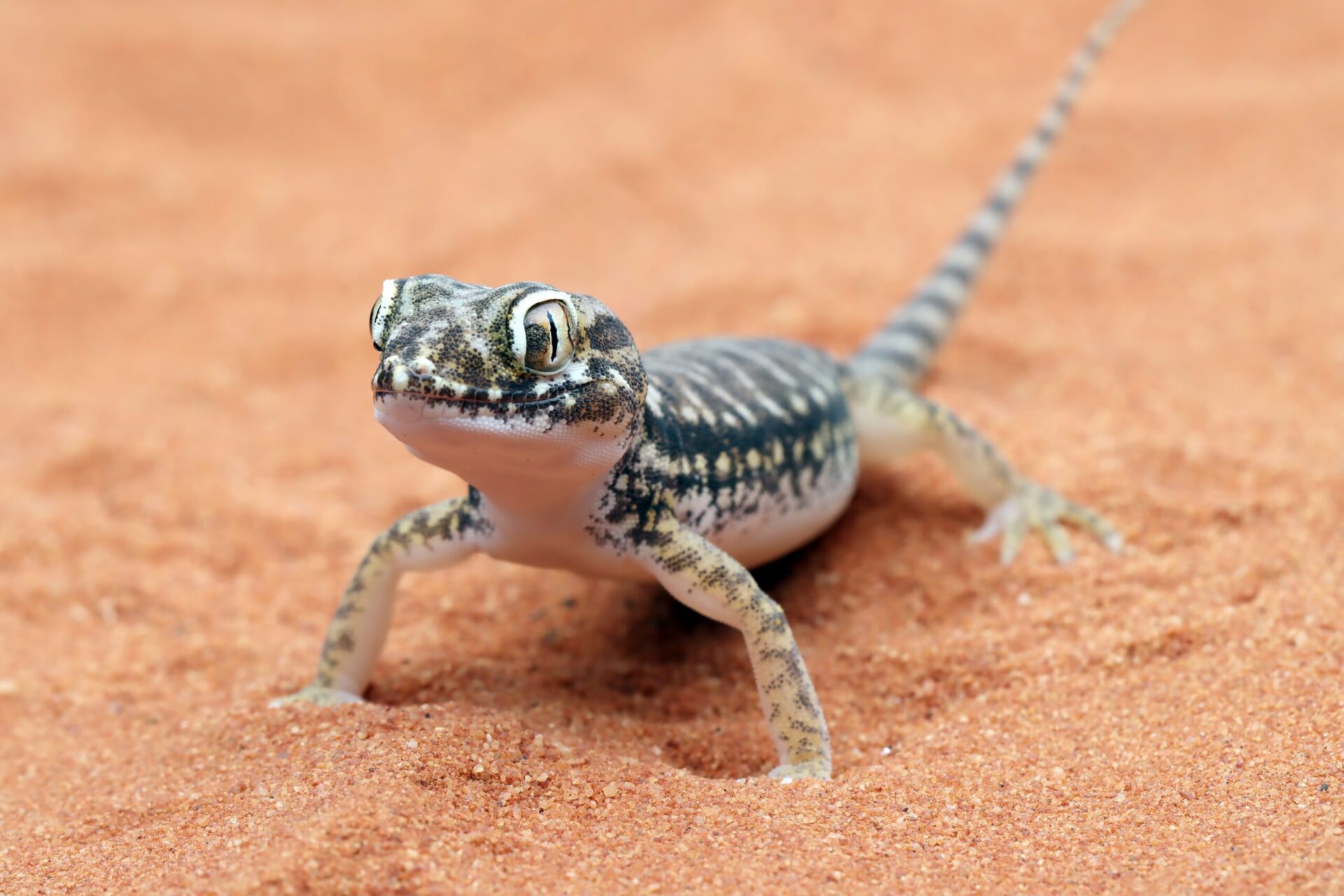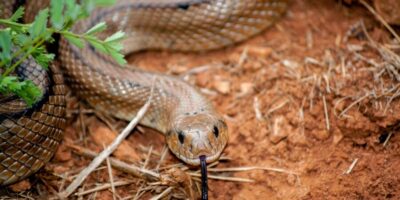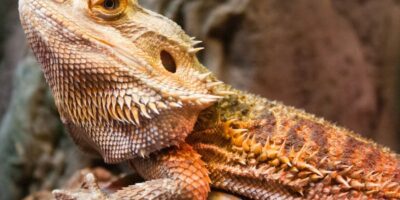The Ridge Tail Monitor is a fascinating reptile species. With its sleek and slender body, distinctive ridge-like scales along its tail, and beautiful coloration, it’s hard not to be captivated by these creatures. They are native to various parts of Australia and possess incredible climbing and digging abilities.
The Ridge Tail Monitor is naturally found in various parts of Australia, including regions like Western Australia, the Northern Territory, and Queensland. These reptiles thrive in a range of habitats, from arid deserts to tropical woodlands.
They are excellent climbers and can often be spotted scaling trees, rocks, and even cliffs. Ridge Tail Monitors are also skilled diggers, creating burrows to seek shelter and regulate their body temperature. Their natural habitat provides them with a diverse array of prey, including insects, small mammals, birds, and eggs.
Physical characteristics and unique features
The Ridge Tail Monitor is a remarkable reptile with distinct physical characteristics and unique features. These reptiles can grow to an impressive length of around 3 to 4 feet, with males typically being larger than females. One of their most striking features is the ridge-like scales that run along their tail, giving them their name. These ridges help them with balance and provide them with extra grip when climbing.
Ridge Tail Monitors have sleek and slender bodies, covered in scales that can range in color from shades of brown and gray to vibrant yellows and oranges. They also have sharp claws and a long, forked tongue that they use to explore their surroundings.
These incredible reptiles are primarily found in the arid regions of Australia, such as Western Australia, the Northern Territory, and Queensland. They have adapted to thrive in a variety of environments, including deserts, woodlands, and rocky areas. Ridge Tail Monitors are skilled climbers, using their strong limbs and sharp claws to scale trees and rocks.
They are also adept diggers, creating burrows to seek shelter and regulate their body temperature. In terms of behavior, these monitors are known for their intelligence and curiosity. They are active during the day and are often seen basking in the sun to warm up. They are opportunistic predators, feeding on a variety of prey including insects, small mammals, birds, and eggs. With their agility, adaptability, and inquisitive nature, Ridge Tail Monitors are truly fascinating creatures to observe in the wild
Housing and Enclosure
When setting up an enclosure for a Ridge Tail Monitor, there are few guidelines to keep in mind. First, make sure the enclosure is spacious enough to accommodate their active nature. A minimum size of 4 feet by 6 feet is recommended for juveniles, while adults will need an even larger space. Provide a mix of substrates like sand, soil, and rocks to mimic their natural habitat. Include climbing structures such as branches and rocks, as well as hiding spots like logs or caves. Maintain a temperature gradient with a basking spot around 100-110°F and a cooler side around 80-85°F. UVB lighting is essential for their health and should be provided for 10-12 hours a day. Lastly, ensure a regular supply of fresh water and a varied diet to keep your Ridge Tail Monitor happy and healthy in their enclosure.
Factors
These factors are crucial for creating a comfortable and healthy environment for your scaly friend. In terms of temperature, you’ll want to provide a thermal gradient within the enclosure. This means having a basking spot with temperatures ranging from 100-110°F (37-43°C) on one end, and a cooler side around 80-85°F (27-29°C) on the other. This allows your Ridge Tail Monitor to regulate its body temperature as needed.
Humidity is also important for their housing and enclosure and the aim is for a humidity level of around 50-60% in the enclosure. This can be achieved by misting the enclosure daily and providing a shallow water dish for your monitor to soak in. When it comes to lighting, UVB lighting is essential for your Ridge Tail Monitor’s overall health. Use a UVB bulb specifically designed for reptiles and provide 10-12 hours of light per day. This will help your monitor absorb calcium and maintain strong bones.
As for substrate, a mix of sand, soil, and rocks can be used to mimic their natural environment. This allows for digging and burrowing behavior, which is important for their mental and physical well-being. Just make sure the substrate is clean and free of any harmful chemicals or sharp objects. Ensuring the right temperature, humidity, lighting, and substrate will provide a comfortable and enriching home for your Ridge Tail Monitor.
Feeding and diet
When it comes to the dietary needs of Ridge Tail Monitors, they are carnivorous reptiles with diverse appetites. A well-balanced diet is key to keeping your Ridge Tail Monitor healthy and happy. Their diet mainly consists of insects, small mammals, and eggs. Insects like crickets, mealworms, and roaches are great protein sources for them. You can also offer them small mammals like mice or rats as occasional treats.
Eggs, such as chicken or quail eggs, can be included in their diet as well. It’s important to provide a varied diet to ensure they receive all the necessary nutrients. Don’t forget to dust their food with calcium and vitamin supplements to support their bone health. And of course, always provide fresh water for them to drink and soak in, and following these tips will help keep your Ridge Tail Monitor happy and thriving
Handling and interaction

Gentle handling and gradual socialization are crucial when it comes to Ridge Tail Monitors. These reptiles can be quite shy and skittish, so it’s important to approach them with patience and care. Start by allowing them to get used to their new environment before attempting any handling.
When it’s time to handle them, make sure to do so gently and avoid sudden movements that might startle them. Gradually increase the duration and frequency of handling sessions to help them become more comfortable with human interaction. This process takes time, so be patient and let your monitor set the pace. Building trust and creating a positive interaction with Ridge Tail Monitors is all about patience and respect. Start by giving them time to get used to their new environment and avoid rushing into handling it. When interacting with them, be gentle and avoid sudden movements that might startle them.
Offer them their favourite treats as a way to create positive associations and speak softly to them to help them feel more comfortable. Gradually increase the duration and frequency of handling sessions as they become more relaxed.
Health and Care
Ridge Tail Monitors may face respiratory infections, parasitic infections, metabolic bone disease, and mouth rot. Look out for signs like lethargy, loss of appetite, and abnormal behaviour. Regular vet check-ups and proper husbandry are important for prevention.
Regular health check-ups for your Ridge Tail Monitor are essential. Take them to a reptile vet for thorough examinations and to address any concerns. When it comes to hygiene, regularly clean their enclosure by removing waste, replacing substrate, and disinfecting surfaces. Maintain proper temperature and humidity levels to prevent bacterial growth. Also, provide a clean water source and ensure their food is fresh. Keeping a clean and hygienic environment will help keep your Monitor healthy and happy.
Breeding and Reproduction
Ridge Tail Monitors have an interesting breeding behaviour and the reproductive process. During the breeding season, males will engage in courtship displays to attract females. This can include head bobbing, tail wagging, and even biting.
Once a female is receptive, mating occurs, usually with the male gripping onto the female’s neck or body. After successful mating, the female will lay a clutch of eggs, usually in a carefully constructed nest. Incubation can take several months, and the temperature determines the sex of the hatchlings. It’s important to provide a suitable nesting area and proper temperature for successful breeding.
Conclusion
To conclude, it’s important to prioritize the health of your Ridge Tail Monitor by staying vigilant for any signs of illness and seeking regular vet check-ups. Understanding their unique breeding behaviour and providing suitable conditions for successful reproduction is also crucial. Additionally, maintaining a clean enclosure and proper temperature will contribute to their overall well-being. By following these guidelines, you’ll be well on your way to keeping your Ridge Tail Monitor happy and healthy.




